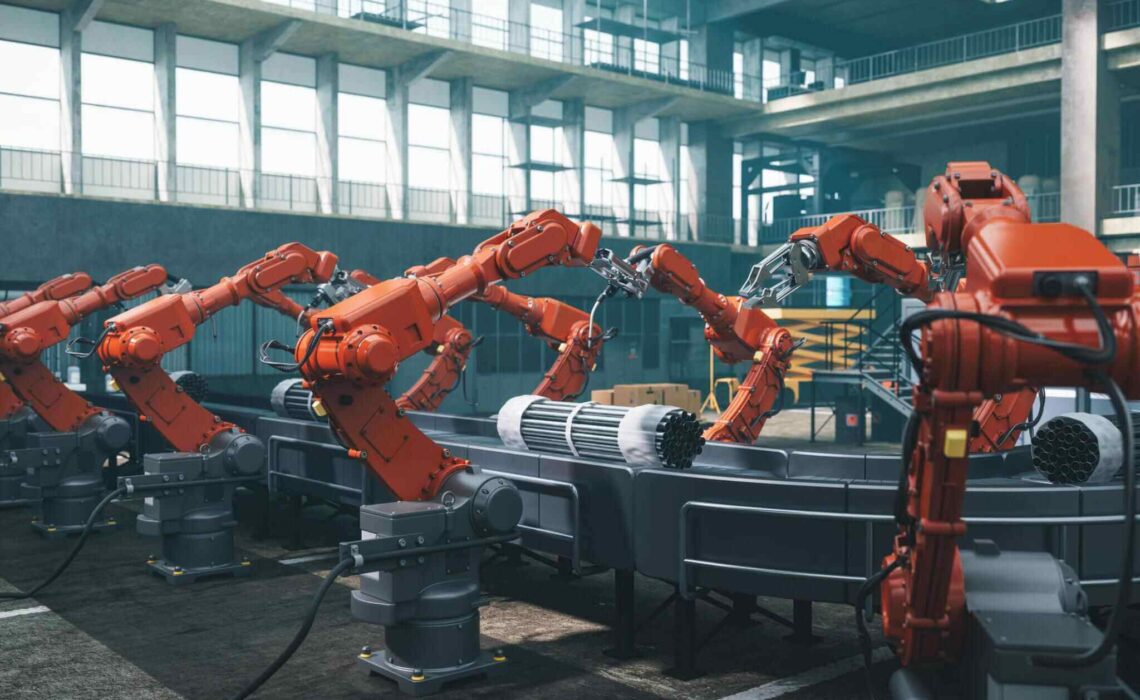In the current rapid-paced business environment, efficiency is the name of the game, especially in manufacturing. With the rise of automation, factories are transforming like never before. From robotic assembly lines to smart inventory management systems, automation is revolutionizing how products are made and distributed.
This article will delve into the role of automation in modern manufacturing, exploring its impact on productivity and competitiveness. It will also take a look at how the innovative contributions of Locus Robotics are revolutionizing warehouse operations and further enhancing efficiency in the manufacturing landscape.
1. Streamlining Production
Table of Contents
Gone are the days when manufacturing relied solely on manual labor. Robotic assembly lines have taken center stage, offering unmatched precision and speed. These robots are programmed to perform repetitive tasks with utmost accuracy, leading to higher production rates and lower error margins. By automating the assembly process, manufacturers can significantly reduce cycle times and ramp up production to meet growing demands.
2. Optimizing Supply Chains
Inventory management is a critical aspect of manufacturing, and automation has brought about significant improvements in this area. Utilizing warehouse solutions powered by advanced technologies, such as RFID tagging and barcode scanning, companies can now track inventory in real-time with pinpoint accuracy. This level of visibility enables better forecasting, efficient stock replenishment, and minimization of stockouts, ultimately leading to cost savings and improved customer satisfaction.
3. Impact on Productivity and Competitiveness
The integration of automation into manufacturing processes has a profound impact on overall productivity and competitiveness. By automating routine tasks, workers can focus their skills and expertise on more value-added activities, such as problem-solving and innovation. This not only enhances employee satisfaction but also drives continuous improvement within the organization.
Moreover, automation allows manufacturers to operate 24/7 without the constraints of human fatigue, leading to increased output and shorter lead times. This agility enables companies to respond swiftly to changing market dynamics and customer demands, staying ahead of the competition in a rapidly evolving landscape.
4. Quality Control and Inspection
Automation isn’t just about speed and efficiency; it also plays a crucial role in maintaining product quality. Automated inspection systems equipped with advanced sensors and machine vision technology can detect defects with unparalleled accuracy, ensuring that only high-quality products reach the market. Manufacturers can reduce waste and improve customer satisfaction by minimizing defects and rework.
5. Flexible Manufacturing Systems
Traditional manufacturing setups often struggle to adapt to changing production requirements. However, with flexible manufacturing systems enabled by automation, companies can easily reconfigure production lines to accommodate varying product specifications and demand fluctuations. This agility allows manufacturers to respond quickly to market changes and optimize resource utilization.
6. Employee Upskilling and Training
The introduction of automation may raise concerns about job displacement. However, it also presents opportunities for employee upskilling and training. By investing in training programs focused on robotics, programming, and data analysis, companies can empower their workforce to operate and maintain automated systems effectively. This not only enhances employee engagement but also ensures a smooth transition to the automated manufacturing environment.
7. Environmental Sustainability

Automation can contribute to environmental sustainability by optimizing resource utilization and reducing waste. Automated manufacturing facilities can significantly lower their carbon footprint by streamlining production processes and minimizing energy consumption. Additionally, automation enables predictive maintenance, reducing the likelihood of equipment failures and the associated environmental impact.
8. Locus Robotics – Revolutionizing Warehouse Operations
One noteworthy example of automation in action is Locus Robotics. Their innovative autonomous mobile robots (AMRs) are designed to work collaboratively with human workers in warehouse environments, enhancing efficiency and order fulfillment speed. These robots navigate through the warehouse autonomously, picking up and transporting items to designated locations with precision and speed. By automating tedious and labor-intensive tasks, they help companies streamline their warehouse operations, reduce operational costs, and improve overall productivity.
Conclusion
In conclusion, automation is reshaping the manufacturing landscape in profound ways. From robotic assembly lines to smart inventory management solutions, automation has become the driving force behind increased efficiency and competitiveness in the industry. As technology continues to advance, the potential for further optimization and innovation in manufacturing processes is limitless.
Embracing automation is not just about keeping up with the times—it’s about staying ahead of the curve and unlocking new levels of efficiency and productivity.





No Comments